Rose Garden: A history of passion and pride
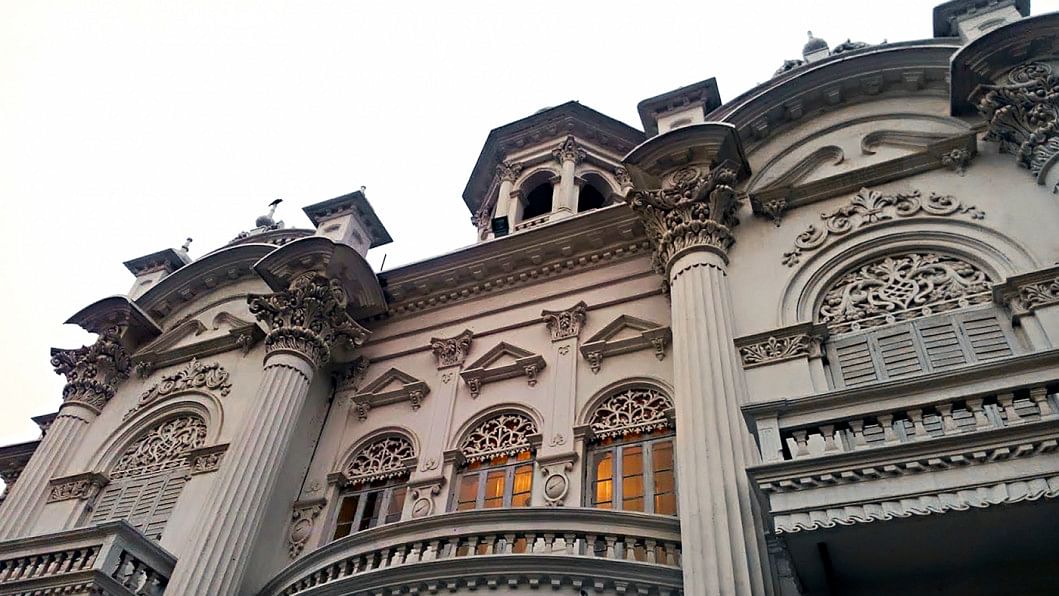
At Kamini Mohan (K.M.) Das Lane in Tikatuli of Old Dhaka, there lies a majestic mansion called "Rose Garden". Interestingly, it was built to host parties by one of the prominent zamindars of Dhaka, named Hrishikesh Das. He built the Rose Garden in 1931 on a 22-bigha plot along with a famous garden that had various species of rare roses. Thus the compound earned the name "Rose Garden". The central piece of the garden is the elegant building.
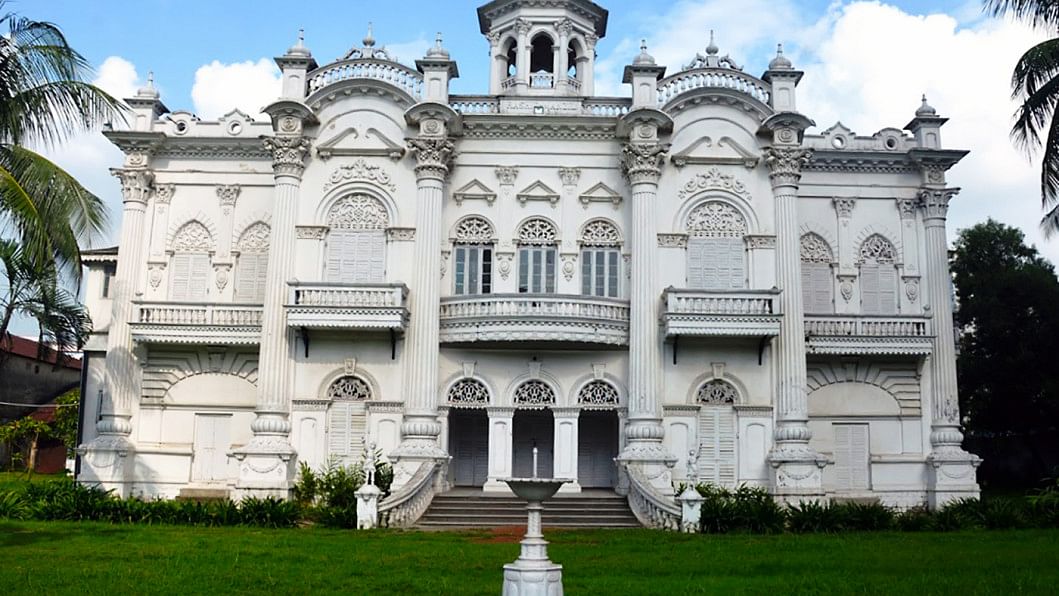
The story of Hrishikesh Das
In the early 1900s, Hrishikesh Das became one of the distinguished zamindars in Dhaka. He had his residence in the area known as Hrishikesh Das Road (at present near Tanti Bazar). He led a lavish lifestyle and had a knack for lofty things. During that time, "Baldha Garden" was the place for socialites to mingle. It became an important element of the social life of the city's wealthier Hindus as most of the jalshas (parties) were arranged there. Unfortunately, as a member of the lower caste, Hrishikesh was not welcomed.
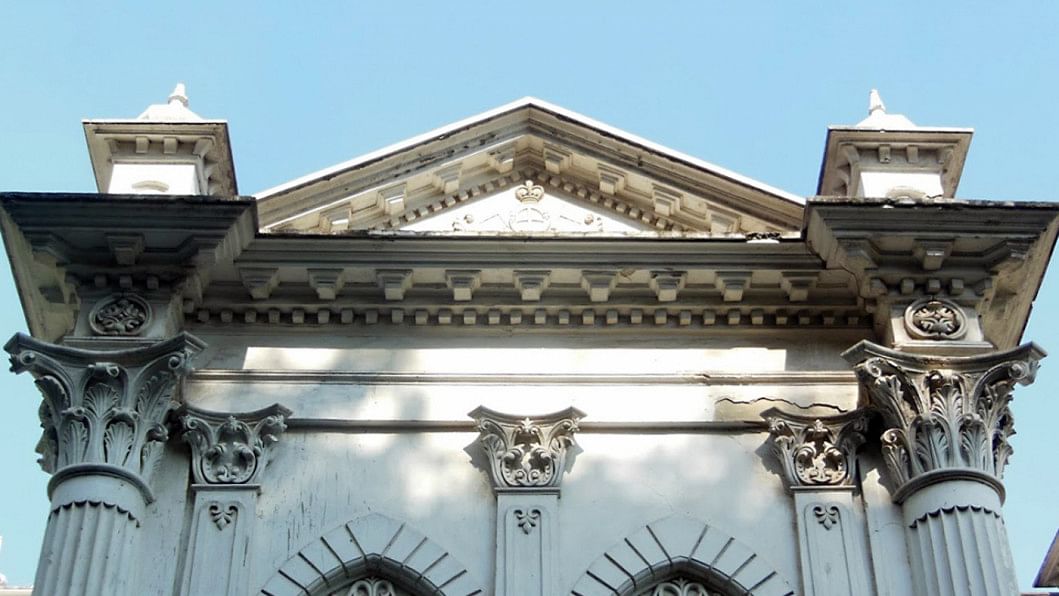
Rumour has it that while attending one of those parties, he was insulted for being a lower caste. Reportedly, the insult came from none other than the famous Narendra Narayan Roy Chaudhury who was the landlord of the estate of Baldha and owner of the Baldha Garden. That incident offended Hrishikesh Das in such a terrible way that he decided to build his own garden which would eclipse the Baldha Garden. Hence, he went on to build one of the most beautiful buildings with a garden, which we now know as the Rose Garden.

The Kazi family
The tragedy is that Hrishikesh Das was spending excessively and lost his focus in business while desperately competing with his counterparts. It didn't take long for him to become bankrupt. In the end, only after a few years of extravagance, in 1936, a hapless Hrishikesh sold the property to Moulvi Kazi Abdur Rashid. Rashid, who was the owner of a publishing house, the Provincial Library of Dhaka, named the mansion "Rashid Manzil".
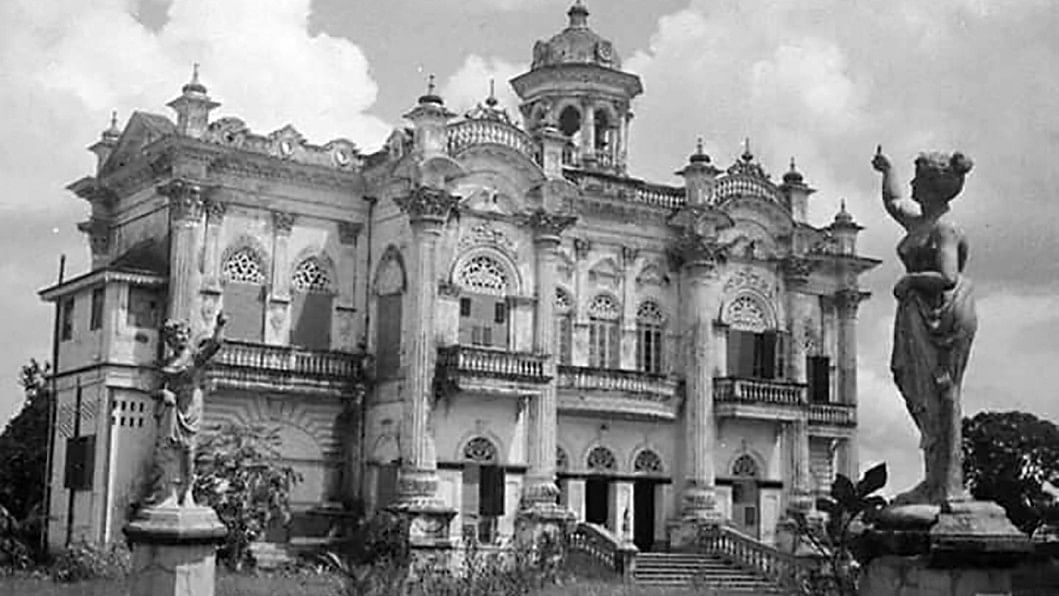
His brother Kazi Humayun Bashir acquired the property's ownership from him in 1966. Since then the complex has been locally known as "Humayun Shaheber Bari". Around the 1960s, the estate was rented out to Bengal Studio and Motion Pictures Limited.

Quickly it became a desired spot for filmmakers who were making movies that involved historical plots or chronicles of kings and zamindars. The first film which was shot here was "Harano Din". The rest is history. The magnificent palace and the lovely garden with a pond turned the place into one of the more popular studios of the city. Later, the owners started renting it out for weddings and other functions.
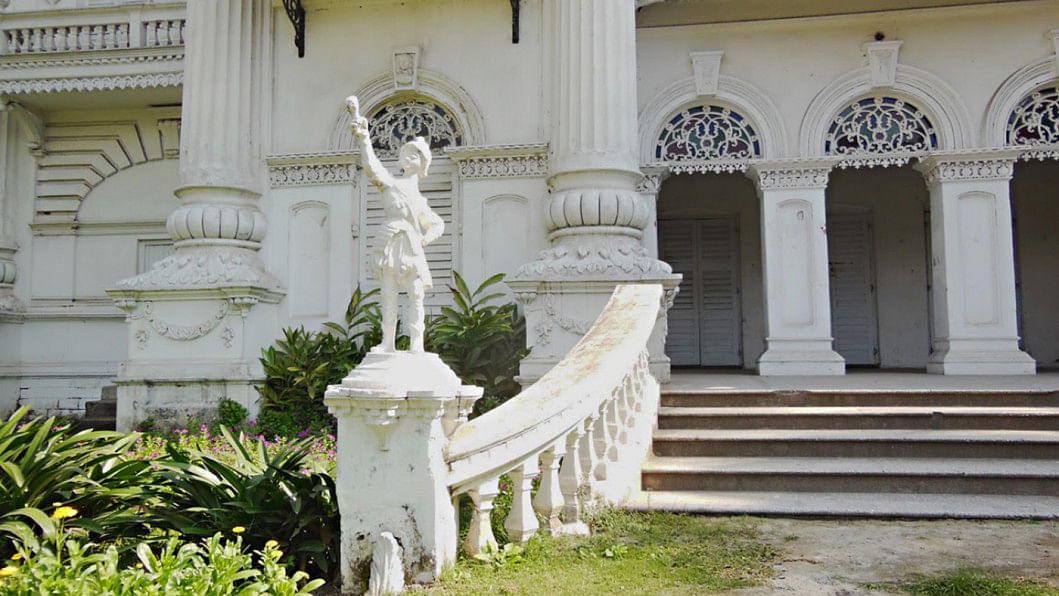
Formation of Awami League
Many of us may not know that the historical establishment also shares a very important political account of Bangladesh. Starting in the 1940s, Rashid Manzil became a meeting place for politicians. Moreover, Kazi Muhammad Bashir from the Kazi family was the chairman of the Dhaka City Corporation from 1953 to 1958. Many of the leaders used to gather there, to discuss political issues, especially the rights of Bengalis in Pakistan.

Consequently, East Pakistan Awami Muslim League (the word "Muslim" was subsequently dropped in 1953) was formed on June 23, 1949, in a meeting at the Rose Garden through an initiative of a progressive part of the Muslim League for the salvation of the Bengalis. So, Rose Garden witnessed the creation of the biggest political party of Bangladesh.
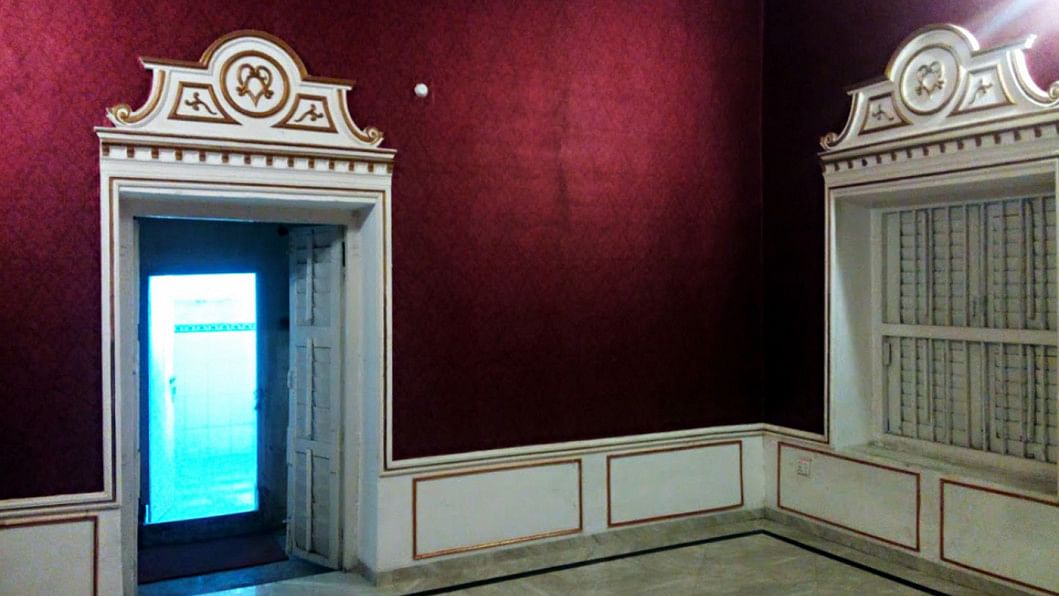
The compound and the building
The design of the structure is one of the finest in Dhaka. Ten Corinthian columns around the main structure enhance the beauty of the building. The height of each column is about 34 feet. There are three rooms, including a central hall on its ground floor. The upper floor has another three rooms including a large dance hall at the centre. There are five cantilever verandahs on three sides of the building. In the front yard, there is a fountain. There are several marble statues in the garden, although the rose garden that gave the mansion its fabled name does not exist anymore. At the back of the building to the east, there is a verandah and a triple-arched entrance porch which leads to a staircase for the upper storey. There is a highly ornamented tower on the front side of the building. There are also two podiums at the top of the north and south sides.
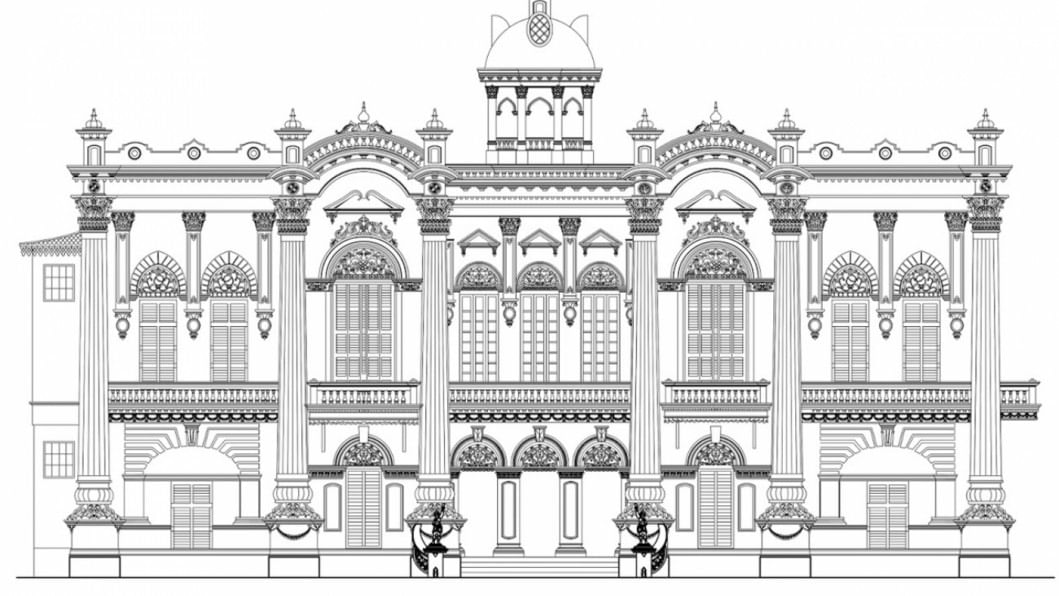
All the openings of the building are decorated with complex geometric patterns and adorned with foliage and animal outlines in wood, coloured Belgian glass and iron. The ceiling of the ballroom of the first floor is floral patterned and embellished with green mirrors. There is an intricately designed spiral staircase in front of the ballroom which leads to the roof.

A high boundary wall surrounds the compound with the 45-foot-high and 7,000-square-foot palace in the middle. The front facade of the building is exceptionally designed, much more ostentatious than the other sides. The building is coloured in a pinkish tone mostly. Due to ageing, a light ash tone reflects from its appearance.

A marvelous dome, beautiful columns, various garden statues and decorations, cascades, decorative windows, tall crystal chandeliers, and last but not least, a luscious landscape which includes a fountain and a pond, make Rose Garden a structure of splendid architecture. As anticipated for a while, the building and its surroundings were declared as a national heritage for their magnificent architecture on December 21, 1989 by the Department of Archaeology.

Moulvi Kazi Abdur Rashid's son Kazi Abdur Rakib got back the ownership of the structure in 1993. Two years later, his wife Laila Rakib inherited the property from him after his death. This unique series of incidents made it the only private property in the national heritage site list. Finally, the government bought this majestic complex on August 9, 2018, and announced plans to turn the location into a museum, as part of its efforts to preserve the history of the city of Dhaka. When implemented, this will be a fitting recognition of the compound in the chronicles of the urban history of our beloved city.
Dhrubo Alam is a technical consultant (Transport) at Dhaka Transport Coordination Authority. He can be reached at [email protected].
Khandokar Mahfuz Alam is Assistant Architect, Department of Archaeology, Ministry of Cultural Affairs. He can be reached at [email protected].
Farah Mahboob is an architect working at Humanitarian Play Lab, BRAC IED. She can be reached at [email protected].




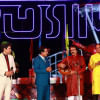

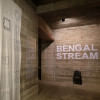
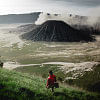


Comments